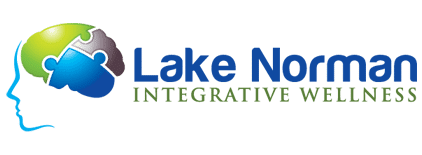Is Your Food Making You "High"? The Food Opiods
Caseomorphins and Gluteomorphins – The Food Opiods
These morphine-like substances, casomorphin and gluteomorphin, which we derive from dairy and wheat respectively, are critical to our understanding of the power of these two foods in our health and well-being.
Caseomorphins are formed during our attempt to digest casein, the protein that makes up 80-90% of the protein content of cow’s milk (versus 0-2% of goat’s milk). It is this same protein that can cause damage to the lower intestinal lining (duodenum) and a malabsorption syndrome similar to that seen in celiac disease, or gluten intolerance. Borden uses casein to make Elmer’s Glue.
The gluteomorphins are derived from gliadin, one of the main proteins found in gluten grains (wheat, barley, and rye). Gluten is also used to make industrial adhesives, as are soy and corn. All four of these foods are capable of damaging the lining of the intestinal tract and leading to the malabsorption of calcium, iron, B complex, C, and trace minerals (e.g. zinc, magnesium, lithium, boron, and more). This malabsorption or leaky gut syndrome contributes greatly to the ill health of the brain (and immune system), setting the stage for the action of these food-derived opiods.
Both caseomorphins and gluteomorphins are morphine-like opiods that have been likened to drugs like LSD. They can be very sedating and addictive and help to explain why 75% of the calories in the standard American diet (S.A.D.) come from wheat and dairy alone. Food addiction is a very real thing and these opiods play a huge role.
As many of you know and have expressed, autistic children are very addicted to wheat and dairy, which is consistent with the tenet that we become addicted to what will make us ill (cigarettes, drugs, alcohol and food ). There are no healthy addictions and food is no exception. If an individual feels that they cannot give up cheese or bread, then they are very likely to be having a problem with one of these foods. I talk with people like this all of the time and can use that dependency to help them see that those very foods are a major contributor to their IBS, thyroid dysfunction, fibromyalgia, neuropathy, arthritis, depression, chronic fatigue or other typical signs associated with food intolerance. And withdrawal from these foods can lead to classic drug-withdrawal symptoms.
These sedating compounds are also the single biggest contributing factor to post-meal drowsiness. My father proved this most accurately as he used to become extremely sleepy after meals. We thought he must have been a narcoleptic. He would literally pass out once he sat down, morning, lunch or night time. He no longer exhibits this annoying and even dangerous symptom now that he is gluten-free. In fact, it has been stated that more people die from falling asleep at the wheel while driving than from alcohol-related accidents. What could be doing this? What could keep us from doing the most important thing (staying awake) while driving down the Interstate at 65-80 mph? Now we know. Throw alcohol into the mix and we have a tragic situation just waiting to happen.
We need to become very familiar with these two terms. Sadly, even most doctors have no idea what these substances are and how much they can affect a person. That is amazing to me. And yet they play a vital role in the lives of the multitudes, contributing to autistic symptoms, food addiction, clinical depression, chronic fatigue, caffeine addiction, highway deaths, and more.
Amaze your friends! Commit these to memory and talk about them at dinner parties. You’ll be the focus of attention. Now, “Go have some nice, warm milk and get a good night’s sleep”. Talk about knowing something without really KNOWING it.
I do hope this helps.
Doc
